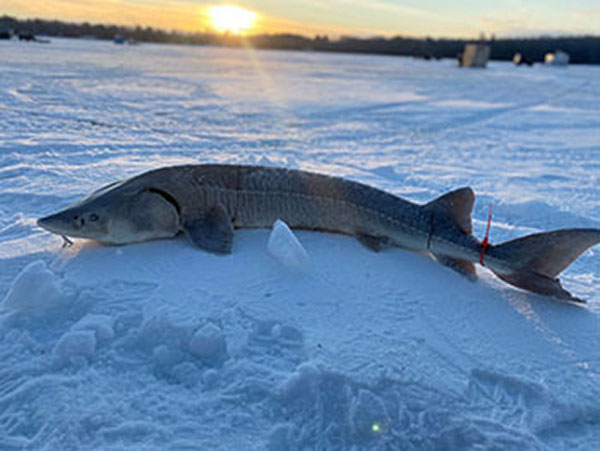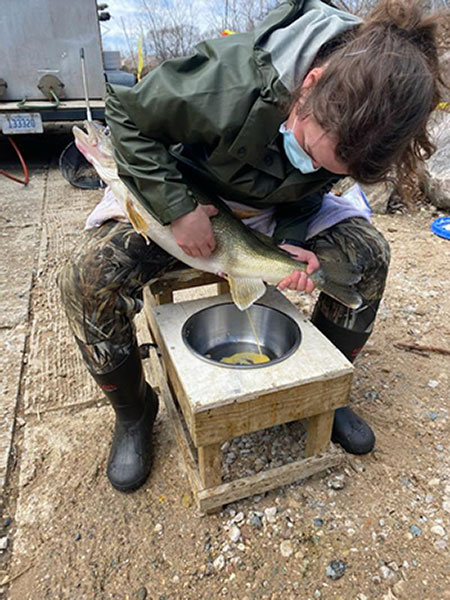- Details
MDNR Report
An order from a federal court in California last week returns gray wolves, including those in Michigan, to the federal list of endangered species. The ruling means that two state laws governing the ability to kill wolves preying on livestock, pets and hunting dogs have been immediately suspended.
The ruling from U.S. District Judge Jeffrey S. White in the Northern District of California vacated a U.S. Fish and Wildlife Service order from Nov. 3, 2020, which removed gray wolves from the List of Endangered and Threatened Wildlife in the lower 48 states, beginning Jan. 4, 2021. That original U.S. Fish and Wildlife Service ruling did not include wolves in the northern Rockies, nor the Mexican wolf subspecies.
“The changes on wolf protections took effect immediately Thursday with the judge’s signing of the U.S. District Court order,” said Michigan Department of Natural Resources Public Information Officer Ed Golder.
- Details
MDNR Report
Michigan DNR Conservation Officer Holly Pennoni was honored Thursday with a Lifesaving Award at the Michigan Natural Resources Commission meeting in Lansing.
Pennoni is credited with delivering rescue breaths to an unconscious man, Ross Gillespie of Cadillac, who – as the result of an unexpected medical condition which caused his blood pressure to plummet – crashed his vehicle on the side of the road while driving southwest of Cadillac on May 18.
Pennoni, driving behind the vehicle, witnessed the incident, called 911 and assisted Gillespie until an ambulance arrived and transported him to the hospital.
- Details
MDNR Report
As spring draws closer, Michigan anglers are encouraged to purchase a 2022 fishing license and to review the upcoming regulations changes that will go into effect April 1 unless noted otherwise.
New licenses go on sale Tuesday, March 1. The new license season begins April 1, and the 2022 fishing licenses are valid through March 31, 2023.
Licenses can be purchased at Michigan.gov/DNRLicenses. By purchasing a fishing license online, anglers will have the opportunity to sign up for auto-renewal through the DNR eLicense system.
New regulations are:
Lake St. Clair and St. Clair River – walleye size limit
The Lake St. Clair and St. Clair River walleye minimum size limit has been increased from 13 inches to 15 inches, which is the same as the statewide regulation. The change will result in uniform walleye regulations throughout the connected waters of the St. Clair-Detroit River system, which includes Lake Erie, the Detroit River, Lake St. Clair and the St. Clair River.
Lake Superior – round whitefish daily possession limit
- Details
MDNR Report
 Black Lake Sturgeon
Black Lake Sturgeon
After only 36 minutes of fishing, this year’s sturgeon season on Black Lake (in Cheboygan and Presque Isle counties) ended at 8:36 a.m. Saturday, Feb. 5. The season, which included spearing and hook-and-line fishing, was scheduled to run Feb. 5-9, or until the harvest limit quota of six lake sturgeon had been reached.
Anglers initially were allocated a season quota of seven sturgeon, but the Michigan DNR set the harvest limit at six fish. This action helps accommodate the expected number of anglers and anticipate the possibility of near-simultaneous harvest of more than one fish.
There were 565 registered anglers, including a good number of supervised youth. According to the DNR, five sturgeon harvested were male and one was a female, ranging from 46 to 62 inches long and 23 to 67 pounds in weight.
- Details
MDNR Report
 Harvesting walleye eggs
Harvesting walleye eggs
With an aim toward maximizing both angler satisfaction and the ecological benefits of the state's walleye fisheries, the Michigan Department of Natural Resources has finalized a plan to guide the department’s management of the popular species in inland waters.
The final plan comes after careful consideration and integration of public input on the draft walleye management plan, which the DNR initially asked for in February 2021.
Although walleye reside in the Great Lakes, rivers and inland lakes, the plan focuses on inland waters – mostly inland lakes – because walleye management in Great Lake waters is primarily addressed in various other department-approved management or rehabilitation plans.


